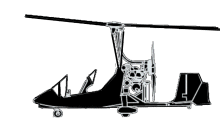
ASN Wikibase Occurrence # 273227
This information is added by users of ASN. Neither ASN nor the Flight Safety Foundation are responsible for the completeness or correctness of this information.
If you feel this information is incomplete or incorrect, you can submit corrected information.
| Date: | Monday 20 December 2004 |
| Time: | |
| Type: |  Magni M16 |
| Owner/operator: | |
| Registration: | ZU-DNH |
| MSN: | 16-04-2764 |
| Fatalities: | Fatalities: 0 / Occupants: 1 |
| Aircraft damage: | |
| Category: | Accident |
| Location: | Farm Spioenkop in the Wolmaransstad district -
 South Africa South Africa
|
| Phase: | |
| Nature: | |
| Departure airport: | Farm Spioenkop in the Wolmaransstad district |
| Farm Brakvlei in the Wolmaransstad district | |
| Investigating agency: | CAA S.A. |
| Confidence Rating: |
The pilot, the sole occupant of the aircraft took off from a friend's farm. On the right-hand side of the runway (open piece of farm land) was an avenue of trees and approximately 600m ahead a set of Eskom power lines and trees. Shortly after becoming airborne at a height slightly above the tree line the pilot experienced an unfamiliar sound emitted by the propeller. At this stage the aircraft was in a substantial nose-up attitude as well at a relatively slow airspeed. He experienced a feeling associated with a reduction in power, as if the aircraft failed to climb. Concerned that he would collide with the power lines and trees straight ahead he opted to execute a forced landing in a ploughed maize field on his left-hand side. On touch down the nose wheel dug into the soft soil and broke off, resulting in the aircraft rolling over to the right and the main rotor blades striking the ground. The pilot was not injured during the accident. On 22 December 2004, the aircraft was delivered to the Magni agents in South Africa where they assessed the damage, which was limited to the dynamic components and main rotor blades. The engine did not sustain any damage in the event and it was decided to perform a run-out on the crankshaft, which was well within the 0.05-inch limitation at 0.02 inches. The aircraft was purchased by the pilot/owner during September 2004 as new. The total airframe and engine hours at the time of the event was recorded at 63.8 hours. The CAA issued an Authority to Fly on 22 October 2004, which was valid until 21 October 2005. PROBABLE CAUSE: It would appear that the pilot failed to assess the wind properly prior to take-off, and once above the tree line he experienced a tail wind condition, with the aircraft in a high nose up attitude, which caused the propeller to “cavitate” (make an unfamiliar sound) as the pilot referred to in his statement, which scared him. Due to the pilot’s limited experience he failed to assess the condition he experienced (similar to a stall in aircraft, behind the power curve) and instead of pushing the control stick forward and gain some airspeed and fly out, he allowed the aircraft to descend (sink) followed by the forced landing, resulting in a rollover.
Accident investigation:
 |
|
Sources:
S.A. CAA
History of this aircraft
Other occurrences involving this aircraft
| 7 November 2010 | ZU-DNH | End of runway 04 at A.J.S. private aerodrome (Eastern Cape) |  |
sub | ||
| 20 April 2015 | ZU-DNH | Xsit | 1 | Citrusdal, Western Cape |  |
w/o |
Revision history:
| Date/time | Contributor | Updates |
|---|
Corrections or additions? ... Edit this accident description
The Aviation Safety Network is an exclusive service provided by:


 ©2024 Flight Safety Foundation
©2024 Flight Safety Foundation